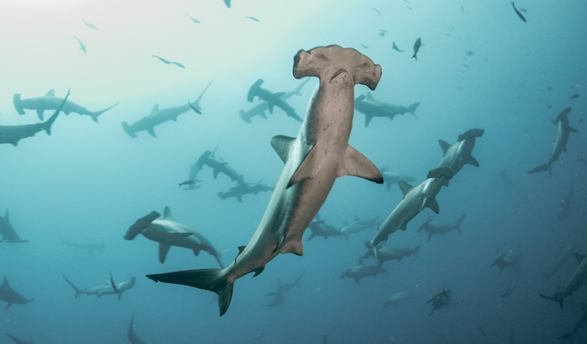BIODIVERSITY PROTECTION SERIES: SEA TURTLES OF INDONESIA
- PT CLS Argos Indonesia
- Jul 8
- 4 min read
Updated: Jul 28

Sea turtles have lived in our oceans for over 100 million years. In Indonesia, which is home to six out of the seven existing sea turtle species, these marine reptiles play a key role in maintaining the health of ocean ecosystems. By grazing on seagrass beds and helping control jellyfish populations, sea turtles contribute to the balance of marine life, and to the livelihoods of many coastal communities.
Sadly, all sea turtle species found in Indonesia are now considered endangered or threatened. Conservation efforts are critical and modern technologies like satellite tracking are becoming essential tools in helping scientists and conservationists better understand and protect these ancient animals.
For over two decades, Argos Services, powered by CLS Indonesia, has supported sea turtle conservation by providing reliable, global satellite tracking solutions. These tools allow researchers to follow turtles over vast distances, uncovering key behavioral patterns that were previously out of reach.
Indonesia’s Sea Turtles: Species, Threats & the Power of Argos Services

Indonesia’s unique geography makes it a prime habitat for sea turtles such as the Green turtle (Chelonia mydas), the Hawksbill turtle (Eretmochelys imbricata), the Leatherback turtle (Dermochelys coriacea) and also the Olive ridley, Loggerhead, and Flatback turtles which are less common but still present.
Despite their resilience, these species face serious threats, including:
Illegal egg collection and hunting
Loss of nesting beaches due to tourism and construction
Plastic pollution and fishing gear entanglement
Rising temperatures affecting hatchling survival

So how can we protect them? To effectively protect sea turtles, we must first understand their life cycle, movement, and habitat use and this is where satellite tracking comes into play.
With Argos satellite tags attached to a turtle’s shell, researchers can collect data on nesting and foraging locations, migration routes (sometimes spanning thousands of kilometers), time spent at sea or diving depths and seasonal changes in behavior.
By analyzing this data, conservationists can identify critical habitats and propose marine protected areas (MPAs) or better fishing practices.
Every animal has its tag
Not all sea turtles are the same. Each species has a different type of shell, some are hard and rough, others are soft and smooth. Their size, shape, and how they move in the ocean also vary. These differences mean that one type of satellite tag doesn’t work for every turtle.
For example, a tag that fits well on a green turtle may not be suitable for a leatherback, which has a soft, flexible shell. Some turtles dive deep, while others stay near the surface which also affects which kind of tag is best.
That’s why scientists choose and adjust the type of Argos satellite tag for each turtle. This helps make sure the tag stays on properly, the turtle stays safe, and we get good, reliable data to better protect them.
Researchers can choose from a range of models, some compact and lightweight, others with extended battery life for long-term tracking. To explore the available options, you can visit our page listing recommended manufacturers for sea turtle tags.
Early Tracking Projects in Indonesia
Indonesia has been at the forefront of sea turtle tracking since 1999, when one of the earliest projects using Argos focused on tracking Hawksbill turtles after nesting. This groundbreaking work offered a first glimpse into the long-distance migrations of these elusive creatures.

In 2005, a major scientific partnership was launched between WWF-Indonesia, TNC, and Conservation International. The goal? To better understand the Raja Ampat archipelago — one of the world’s richest marine biodiversity hot spots — through an ecosystem-based management approach.
Sea turtles played a central role in this research. Using Argos Services, scientists tracked Green and Hawksbill turtles to map:
Foraging areas
Home ranges
Transboundary migration corridors
The resulting data helped inform the creation of protected zones within the Bird’s Head Seascape.
By 2007, Argos tracking expanded to multiple nesting sites across Indonesia, including Aru, Berau Islands, Nusa Tenggara, Bali, Java, and Kalimantan. With each new deployment, our understanding of turtle migration and behavior deepened, guiding better conservation decisions and regional policy-making.
What we’ve learned and what comes next
Over the past 25 years, satellite tracking has uncovered crucial information:
Some turtles migrate more than 2,000 km between nesting and feeding grounds
Certain coastal areas serve as “rest stops” during migrations
Sea turtles often cross national boundaries, highlighting the need for regional cooperation

Yet despite this progress, there is still so much we do not know. Understanding juvenile turtle behavior, deep-sea foraging, or responses to climate change remains a challenge and a priority.
The good news? Argos Services is evolving. With the successful launches of the Kinéis constellation, users will soon benefit from near-real-time tracking, enabling faster response to threats and more dynamic conservation planning.
Whether you’re part of a research institute, conservation NGO, or environmental agency, CLS Indonesia offers the tools and partnerships to help you succeed. By choosing the right tag for your species and location, you can collect powerful data to protect marine biodiversity in your region. Contact us to start your turtle tracking journey, uncover the hidden lives of sea turtles and ensure their survival for generations to come.







